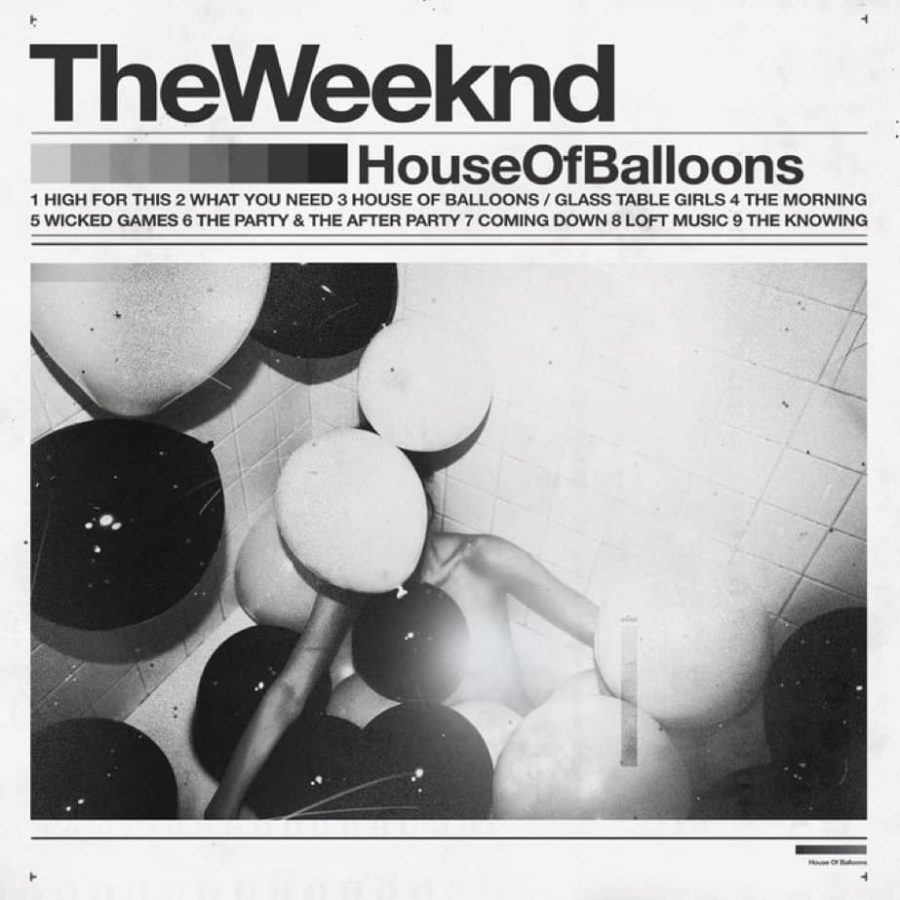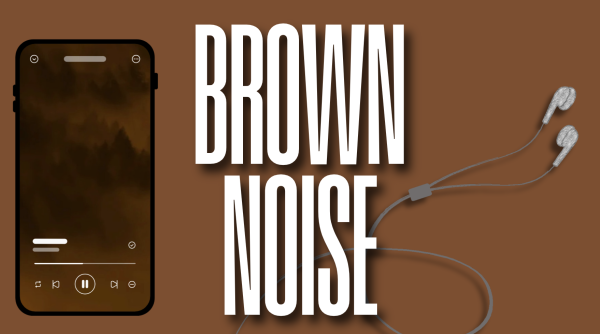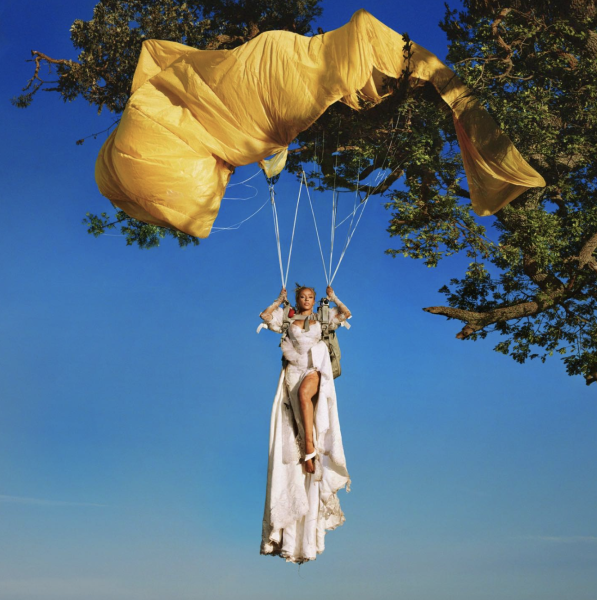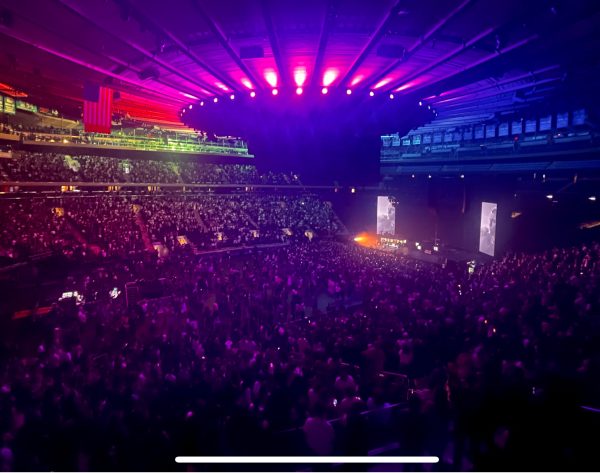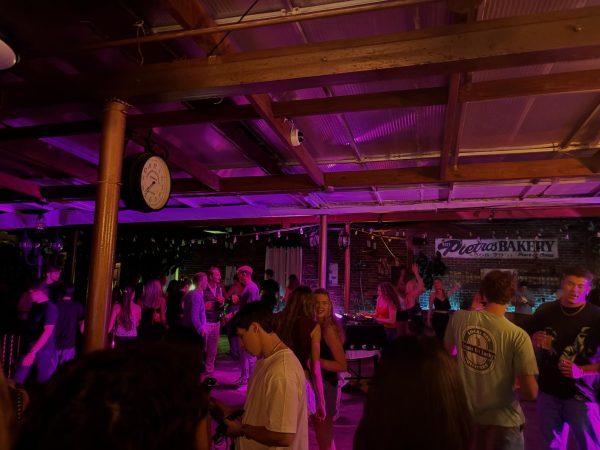3600 Days Later: The Weeknd’s “House of Balloons”
A little less than two months ago, The Weeknd performed on one of the world’s biggest stages. Midway through Super Bowl LV, which was the least-attended Super Bowl in history due to COVID-19 restrictions, the singer-songwriter, born Abel Tesfaye, took over the stadium and delivered a spectacular performance. The 14-minute set featured many of his biggest songs, from 2020’s mega hit “Blinding Lights” to the 2015 Daft Punk collab “Starboy.” Daft Punk did not join him, though, which was especially disappointing in light of the duo’s retirement announcement just weeks afterwards.
In a short transition from the stage to the field, The Weeknd looked even further back — for a brief minute, his 2011 track “House of Balloons” echoed over the city of Tampa Bay. It was not only the closest Siouxsie and the Banshees will probably ever get to performing at the Super Bowl (their 1980 song “Happy House” is sampled prominently on “House of Balloons”), but it also served as a nod to the fans who had been with him from his days as an anonymous name uploading songs to YouTube.
“House of Balloons” is the title track on The Weeknd’s debut mixtape, originally released on March 21, 2011. Though he was far from the star he is today, the tape generated considerable buzz in the R&B world, largely due to the mystique The Weeknd had then cultivated by refusing to reveal his face, give interviews or perform live. An early Drake cosign didn’t hurt either. “House of Balloons” was received extremely well; Pitchfork labeled it best new music, noting in its review that the project was worth every bit of hype surrounding it and its creator.
Ironically, the mixtape itself is utterly devoid of the joy fans expressed upon its release. Sure, it’s exciting — it’s sleek, sexy, smart and at the time of its release, nothing quite like it had ever been heard before. But happiness is hard to come by in the 49 minutes the mixtape runs (despite its title track’s claims to the contrary). From the first moments of opener “High For This,” the eerie atmosphere of “House of Balloons” envelops and overwhelms; a decade later, the mood that engulfs its listener is no less gripping.
The mixtape’s production is perhaps the primary factor contributing to this mood, much of which was masterminded by producers Doc McKinney and Carlo “Illangelo” Montagnese, along with Tesfaye himself. Samples of Siouxsie and the Banshees, Beach House and Cocteau Twins inform but never overtake the woozy nocturnality that commands “House of Balloons” and the drums, strings and synths that underlie its entirety complete the picture. Though it ranges from glitchy and oppressive with “Glass Table Girls” to soaring and dramatic with “Wicked Games,” “House of Balloons” doesn’t stray for a second from the dark gloom it forces its listener to wade through.
While much of this is undoubtedly owed to its production, the mixtape would be nothing without The Weeknd’s arresting songwriting. At just 20 years old, Tesfaye had an uncanny knack for the melancholy, describing scenes of debauchery and destruction with the tired defeatedness of someone three times his age. “House of Balloons” rarely goes a minute without some reference to sex, drugs or both, but The Weeknd hardly revels in them either. Instead, they’re coping mechanisms, forms of escapism and distraction with which he evades coming to terms with himself and the broken relationships he’s immersed in. “Now we’re lying about the nights/Hiding all it behind the smiles,” he sings on album closer “The Knowing,” an ode to a relationship in which The Weeknd and his partner both engage in infidelity.
Though his songwriting has improved in many ways in the decade since “House of Balloons” was released, the haunting lines that fill the pages of its lyric sheet have a decidedly raw and visceral aura that Tesfaye hasn’t quite matched since. That’s perhaps unsurprising considering the mixtape’s name is derived from the house in which Tesfaye and his friends lived after dropping out of high school, which they filled with balloons in an effort to make it less depressing.
Still, the brooding toxicity that “House of Balloons” is drenched in has never disappeared from The Weeknd’s music. It’s overwhelmingly present on “Thursday” and “Echoes of Silence,” the two mixtapes he released months after “House of Balloons” that would later comprise the three-disc, three-hour-long “Trilogy.” Even as he’s ventured further into pop territory, his demons have followed; “Can’t Feel My Face” and “The Hills” being some of his biggest hits are all the needed proof of that. “After Hours,” his most recent, most popular and potentially most ambitious project yet, chronicles Tesfaye’s continued struggles with lechery, depravity and simultaneous selfishness and self-hatred. The ghouls that haunted The Weeknd while he wrote “House of Balloons” are just as frightening now as they were 10 years ago, even if the lights have gotten brighter and the stages bigger in the meantime.
But no matter how finely tuned his ability to write a song about sex and drugs becomes, it’s hard to imagine The Weeknd will recapture the dark magic he once did as a teenager consumed by lust, longing and overindulgence. Regardless of the heights he’s reached in this decade or the heights he ascends to in the next one, and despite the fact that he’s since gotten all that money that once was the motive, The Weeknd’s debut will remain an iconic piece of his discography and of music as a whole for as long as it can be listened to somewhere. And as of Sunday, it can be listened to pretty much anywhere. It was released on streaming services in all its original, sinister glory for its 10 year anniversary.
While you can actually visit the titular House of Balloons in Toronto, the mixtape that it inspired is so good that it makes the trip wholly unnecessary, and a couple listens to it would deter most people from wanting to visit the real thing anyway. The Weeknd probably has a few houses now, but the project he created living in that one will stand as among his best work for the rest of his career and beyond.





































































































































































































